GI2 (Gurkha Issue 2nd)
¥ 4,700.00 – ¥ 5,500.00
| 默认规格(1英寸=2.54厘米) | |
| 刀片尺寸:15英寸 | 手柄尺寸:4.5英寸 |
| 刀片材质:高碳钢5160 | 手柄材质:木质 |
| 刀片工艺:未抛光 | 手柄工艺:抛光 |
| 刀刃锐度:开刃 | 刀刃硬度:55-57 hrc |
| 刀片厚度:8毫米 | 刀鞘材质:牛皮 |
| 附随刀具:无 | 刀身重量:800克 |
| 总体重量:1030克 | 发布日期:2009-01-01 |
| 原产地:尼泊尔 | 发货地:尼泊尔加德满都 |
For hardcore Gurkha fans and for serious kukri collector, it would also not disappoint a harsh kukri user..
对于铁杆廓尔喀爱好者和认真的廓尔喀弯刀收藏家来说,它也不会让一位严苛的廓尔喀弯刀使用者失望。
GI2 Kukri (Gurkha Issue 2nd) / a Gurkha kukri knife from pre to end World War (WW1/Great war) era ..
‘廓尔喀弯刀二代,也称为 Gurkha Kukri,是廓尔喀士兵使用的一种廓尔喀弯刀,在第一次世界大战前至结束期间使用。’
A fearsome, faithful and functional standard army knife that pave its way through to victory and glory encrypting its name into the history book forever. A reproduction version of KHHI nepal of this one of a kind awesome military issue, comes as vacuum filler in the huge collection of the amazing knife.
一把令人敬畏、忠诚且功能强大的标准军用刀,它一路披荆斩棘,取得胜利和荣耀,将自己的名字永远铭刻在史册中。这款 KHHI 尼泊尔的复刻版,既独特又令人敬畏,是军队装备的杰出之作,真空充填于这款令人惊叹的刀具的庞大收藏中。
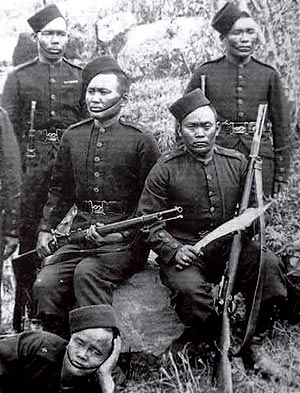
History of GI2; military kukri 1 (MK1)
廓尔喀军刀 2 的历史;廓尔喀军刀 1(MK1)
The Great Indian Mutiny in 1857 AD brought the British and Gurkhas closer than never before. Thereafter proper and standard military uniforms, gears and equipments were issued to each Gurkha Soldier as they were changed/upgraded to regular national army from so called local or back up army. GI2 was probably the second standard kukri issued to Gurkhas that initiated from very early of the 20th Century. The Great World War or 1st World War (WW1) enforced mass production of GI2 numbering into thousands. GI2 was seen in action in frontlines like Gallipoli, Mesopotamia, France, Egypt, Sharqat, Ypres, Loos and many more. Unlike the other GIs, GI2 is rarely marked or stamped. A few models have been seen stamped with “FW” letters which may be the inspection mark from “Fort William”. The actual production of this khukuri started from 1903 to 1915 till the end of the 1st World War. The kukri was extensively used by Gurkhas in the battle as their main weapon / armor as guns and ammunition were scarce and of poor quality. The deadly wrath of its edge not only help the British win many battles but also helped Gurkhas win several gallantry awards including the Victoris Cross (VC).
1857 年的印度大起义前所未有地拉近了英国和廓尔喀人的关系。 此后,随着廓尔喀士兵从地方或后备军队转变为正规的国家军队,他们开始配备适当的标准军服、装备和器材。GI2 可能是 20 世纪初期发给廓尔喀人的第二种制式军刀。 第一次世界大战迫使对 GI2 进行大规模生产,数量达到数千把。GI2 曾出现在加里波利、美索不达米亚、法国、埃及、沙克特、伊普尔、洛斯等前线。与其他 GI 不同,GI2 很少带有标记或印记。一些型号被发现打有“FW”字母,这可能是“威廉堡”的检验标记。 这把廓尔喀弯刀的实际生产始于 1903 年到 1915 年,直到第一次世界大战结束。廓尔喀士兵在战斗中广泛使用廓尔喀弯刀作为他们的主要武器/盔甲,因为枪支和弹药短缺且质量低下。它锋利的刀刃不仅帮助英国赢得了许多战斗,还帮助廓尔喀士兵赢得了包括维多利亚十字勋章 (VC) 在内的多项英勇奖。
KHHI’s version of the official 2nd issue Gurkha Kukri
KHHI官方出品的廓尔喀军刀第二期版本
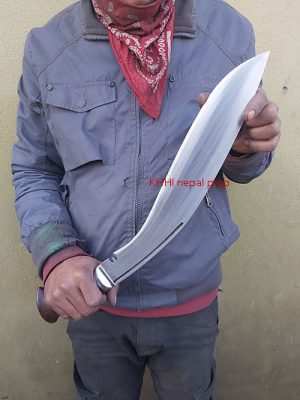
The Blade 利刃
GI2 is a very large and heavy kukri measuring almost 15” long (blade only). Since the user had to rely on the knife as the main back up weapon the long blade was specifically designed to attack, not to defend. The shape is also unusual; more straight, broad panel and flat belly. Its a heavy version objected to finish the job in one single stroke.
GI2 是一款非常大而重的弯刀,刀刃长度接近 15 英寸(仅刀刃)。由于用户必须依靠刀作为主要的备用武器,因此长刀刃专为攻击而设计,而不是防御。其形状也与众不同,刀面更直、更宽、更扁平。这是一个重量级的版本,旨在用一次攻击完成任务。
The handle 操纵杆
the most interesting part is the handle; very short compared to the very long blade (relatively). Some original pieces are half tang where as some are secured by knots from the butt end. Our GI2 has stick tang that is secured by steel keeper at the butt section, done to make the handle fixture strong and reliable. Butt cap is completely discarded as the originals. The wooden handle is fat and straight with thick circular ridge made for easier grip.
最有趣的部分就是刀柄; 与非常长的刀片相比,它非常短(相对而言)。 一些原始的刀具是一半的柄,而另一些则由刀尾的结固定。 我们的 GI2 具有由刀尾处的钢制护圈固定的棒状柄,这样可以使手柄固定牢固可靠。 完全丢弃了刀尾帽,就像原装的刀一样。 木制手柄肥而直,有粗的圆形脊,便于抓握。
The Scabbard 剑鞘
The scabbard is made from black buffalo hide. It has flat inner wooden frame underneath as any traditional format. A brown colored frog is used to probably match it with the belt and holster of the carrying soldier. Like any other GIs, both small knives (Karda /Chakmak) are discarded.
剑鞘由黑色水牛皮制成,采用传统的扁平木制内框架。一个棕色的刀鞘用来与携带士兵的腰带和枪套相配。与其他美国大兵一样,两把小刀(Karda /Chakmak)都被丢弃了。
Materials / Features: Water buffalo leather scabbard, Indian rosewood handle, Brown leather frog
材料/特性: 水牛皮刀鞘,印度紫檀木手柄,棕色皮革刀套
ORIGIN: KHHI, Kathmandu, Nepal (released on 1st Jan 2009)
来源:尼泊尔加德满都 KHHI(于 2009 年 1 月 1 日发布)

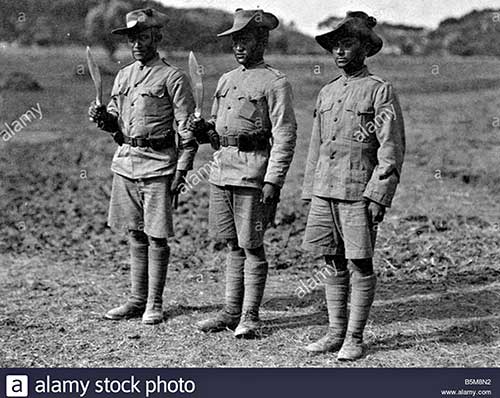
只有已购买此产品的登录客户才能发表评价。

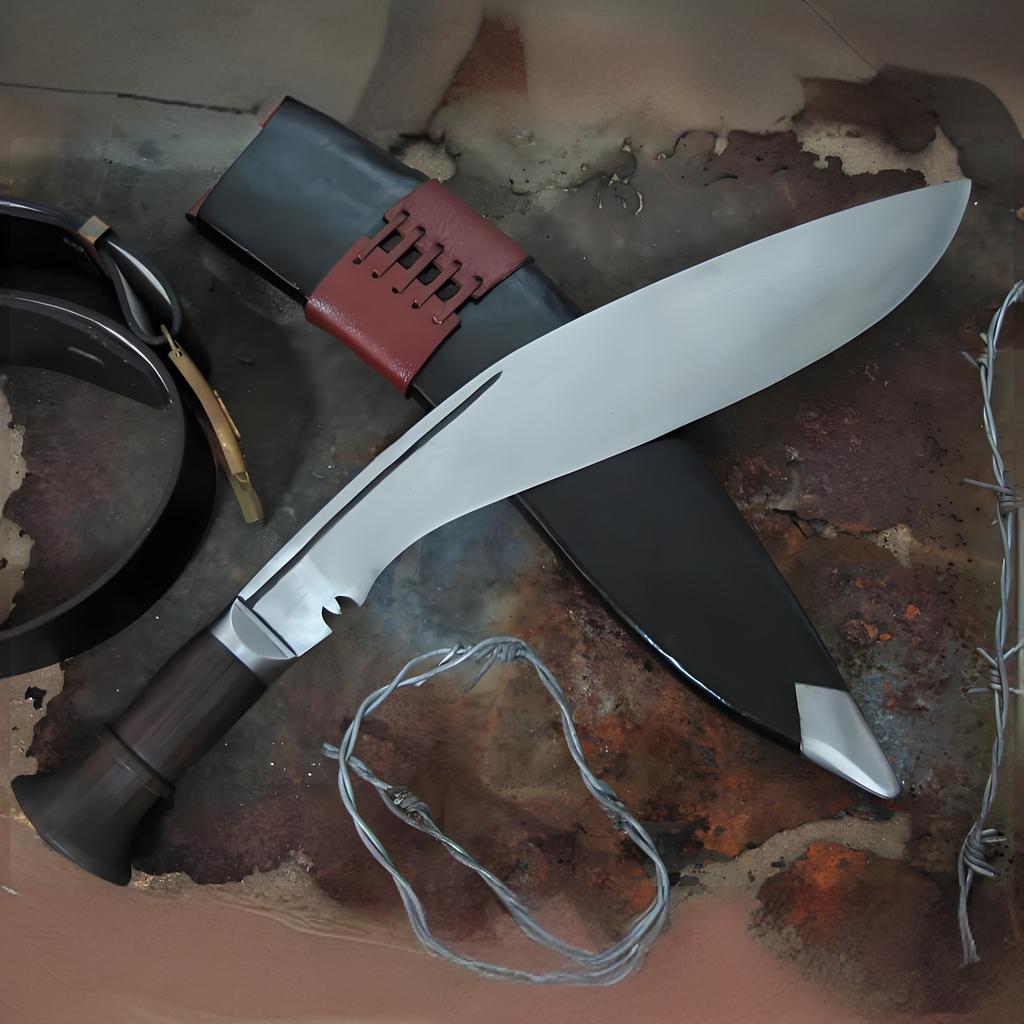
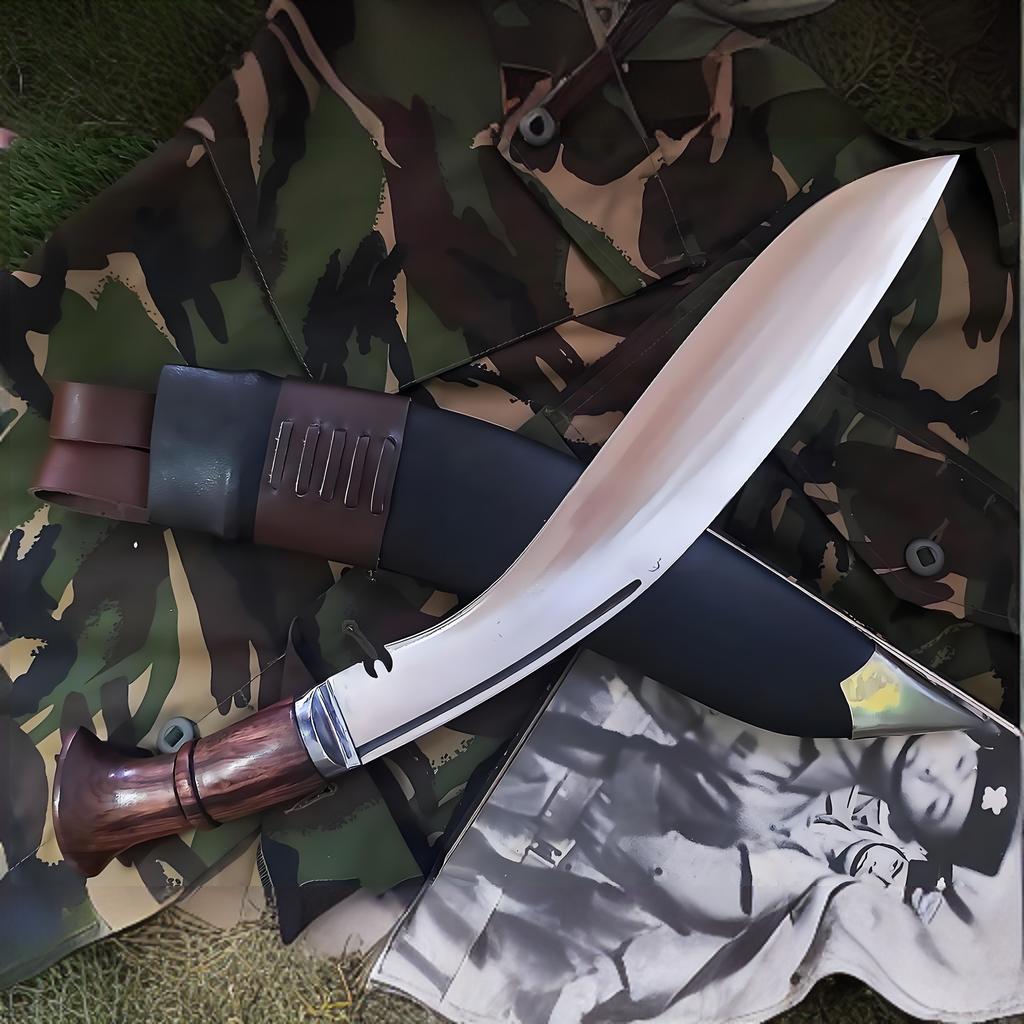
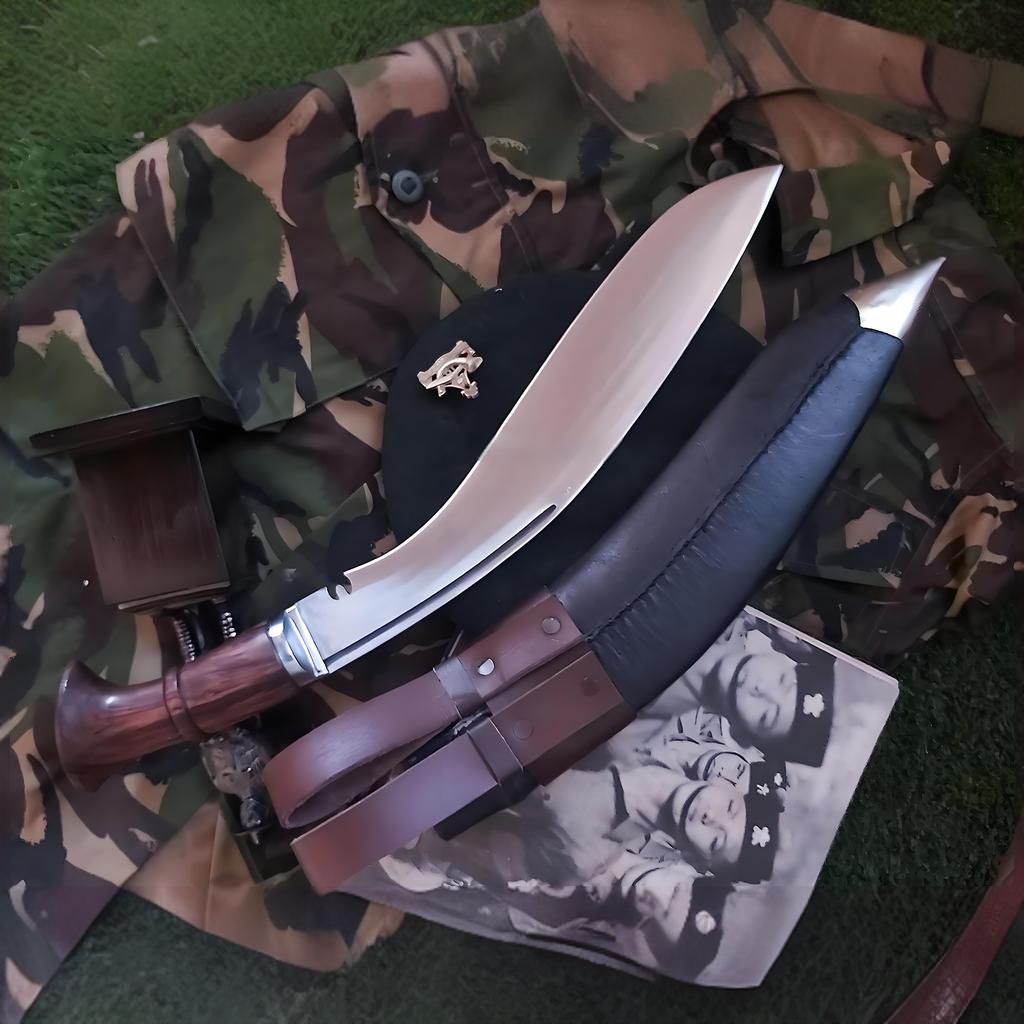
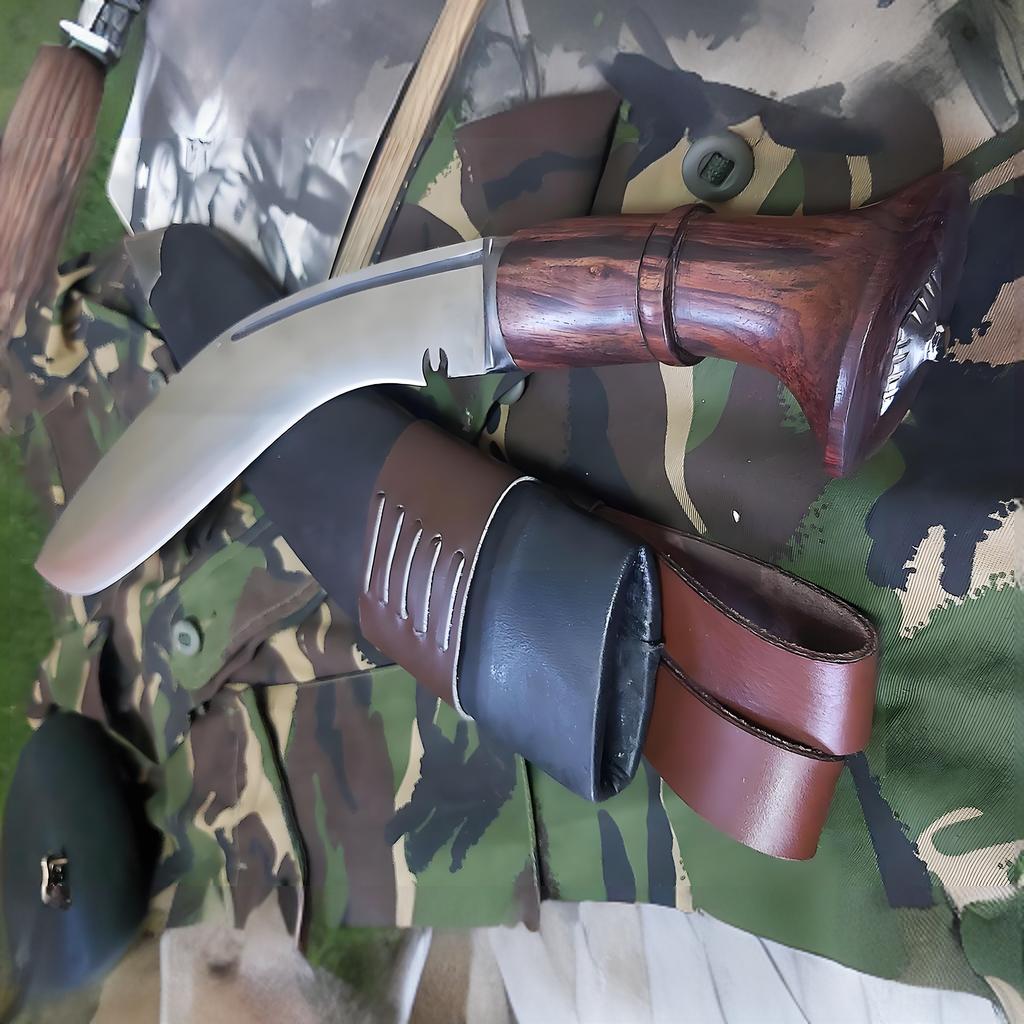
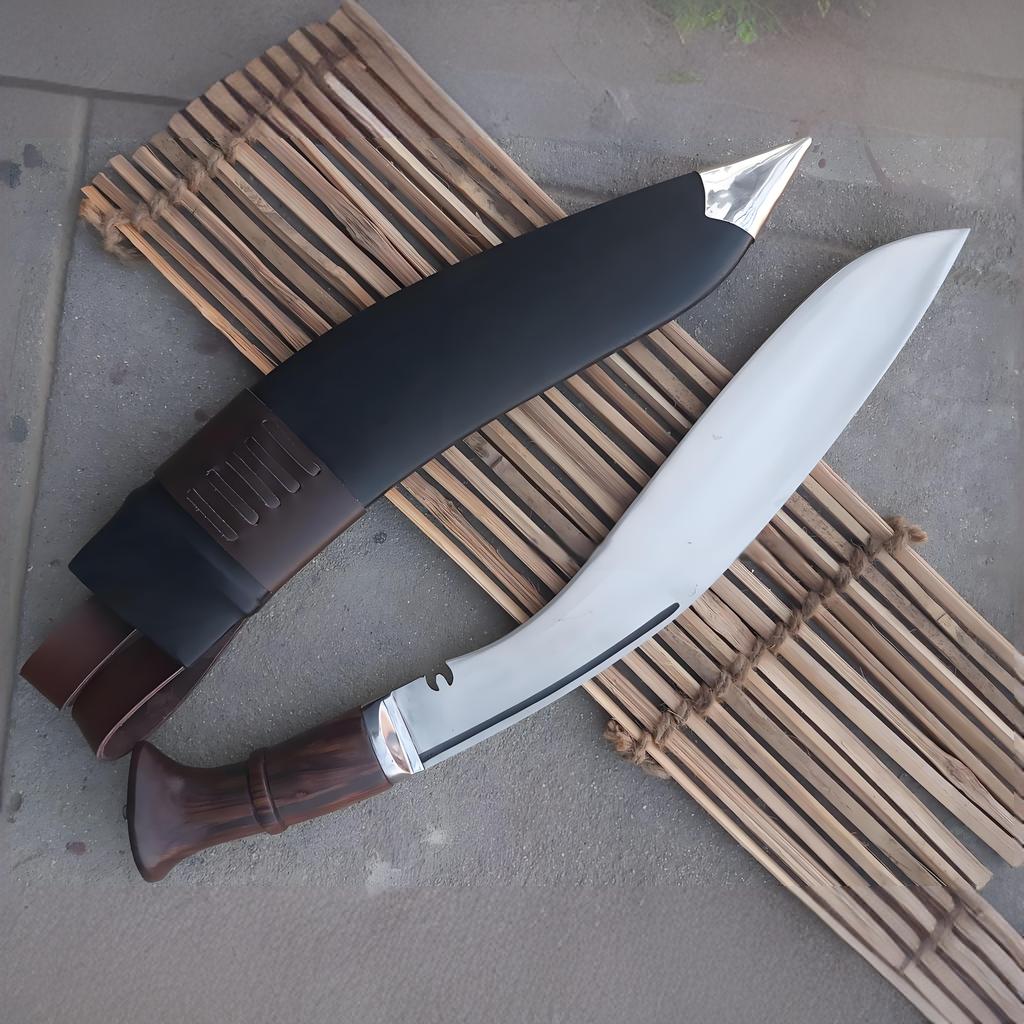
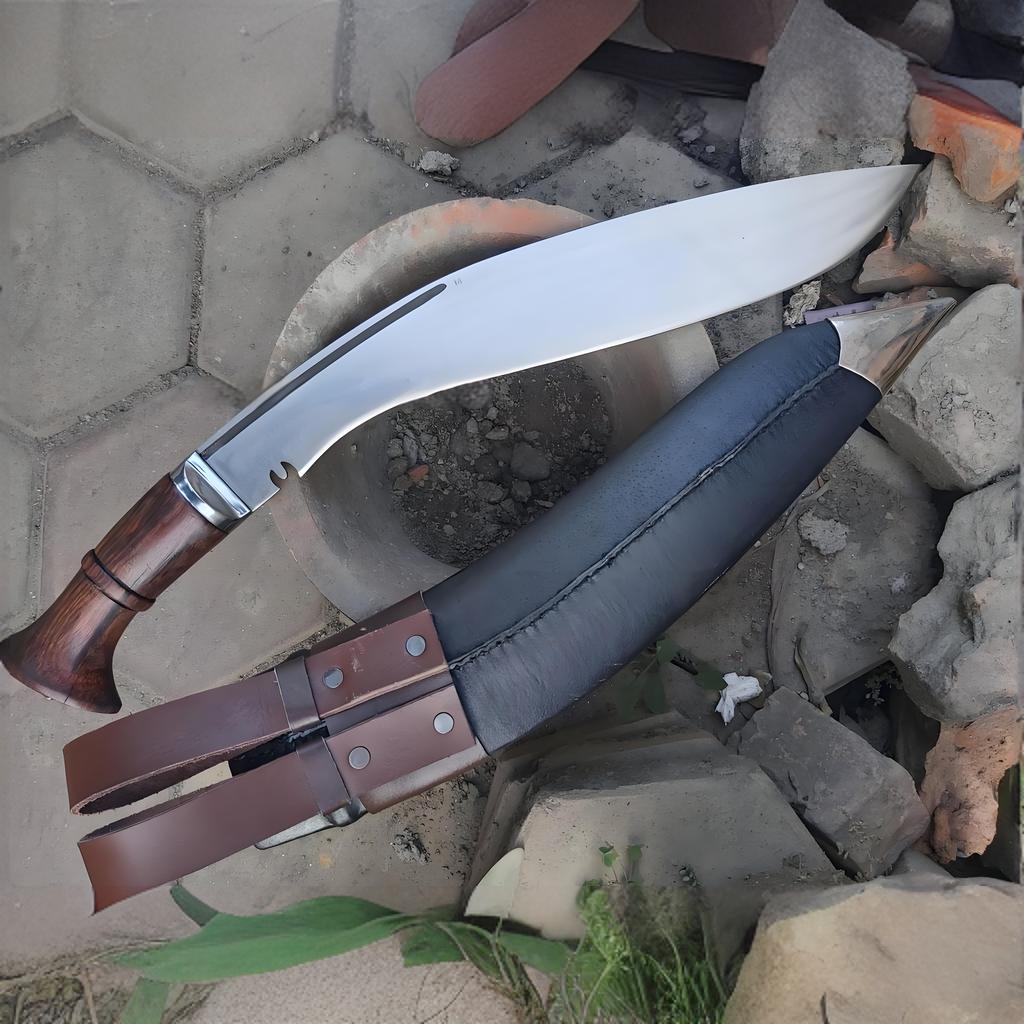
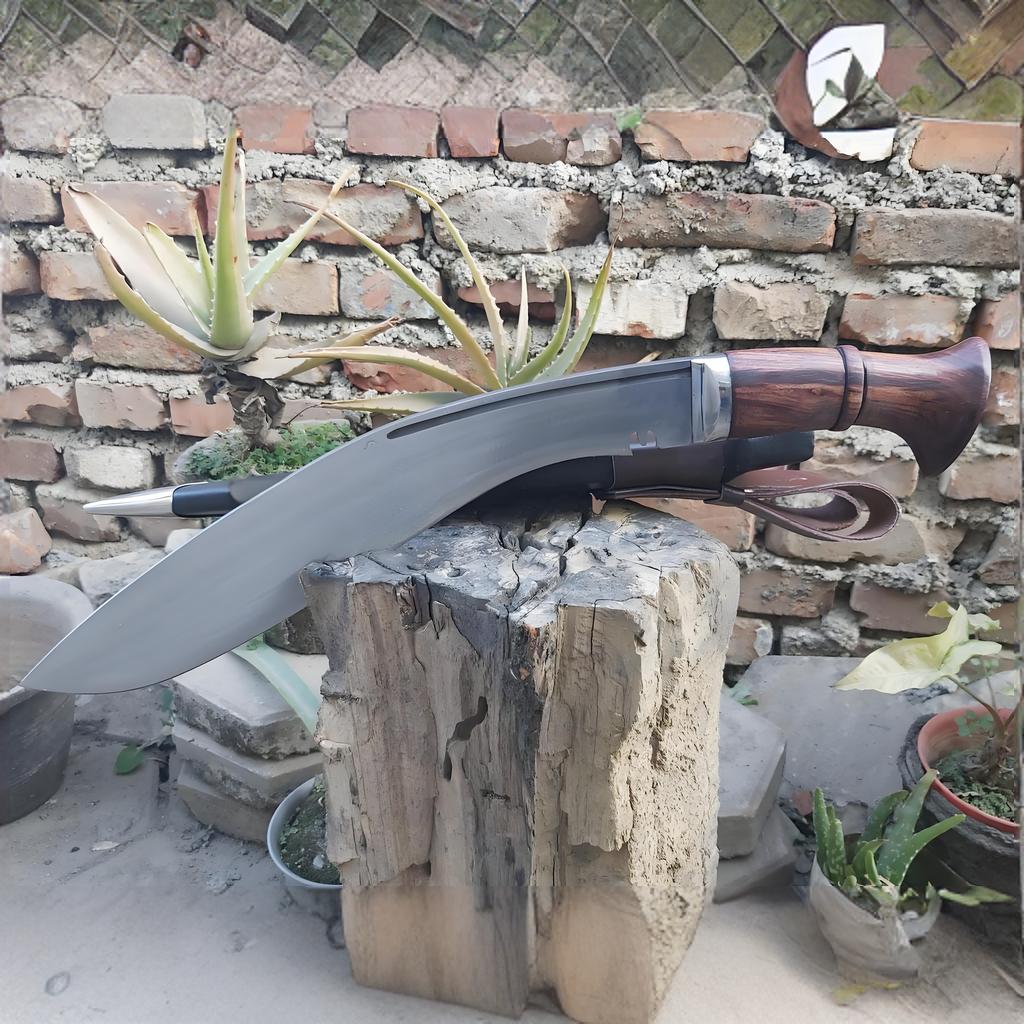
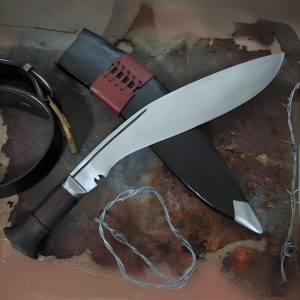

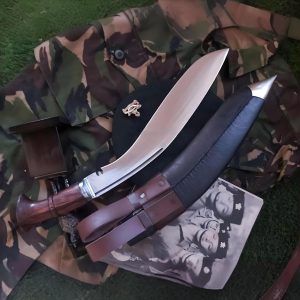
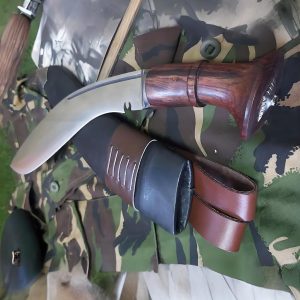
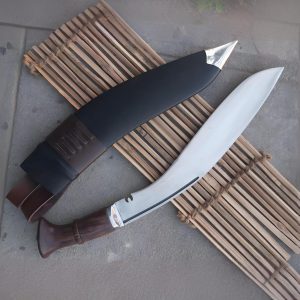
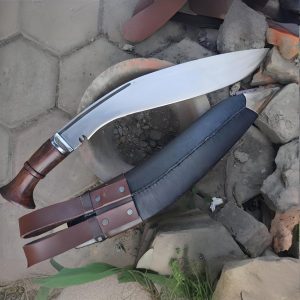
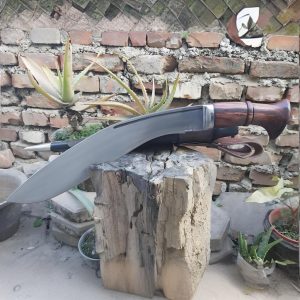
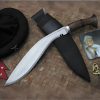

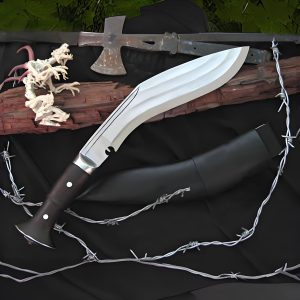
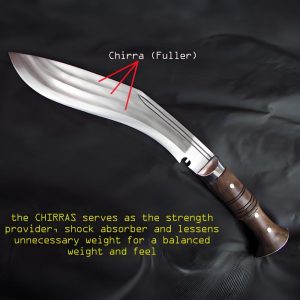
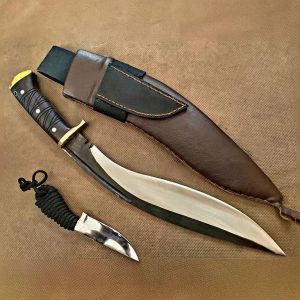
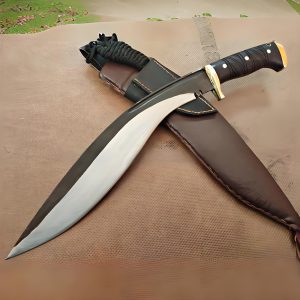
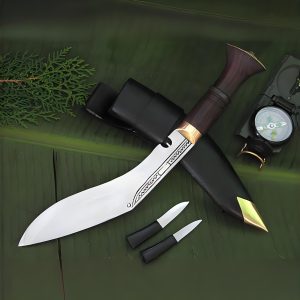
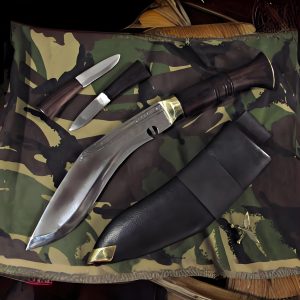
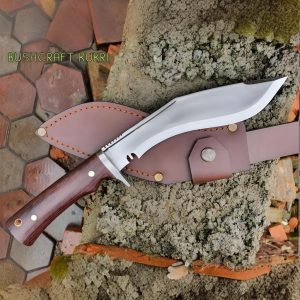
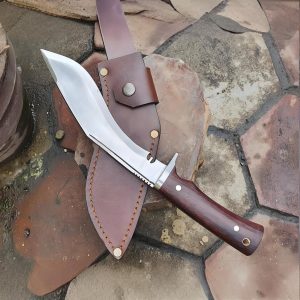
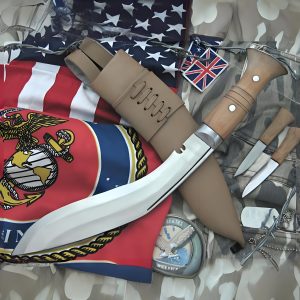
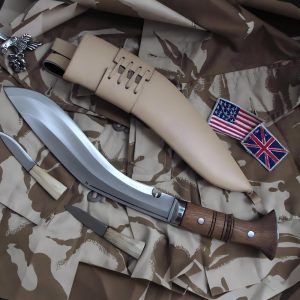
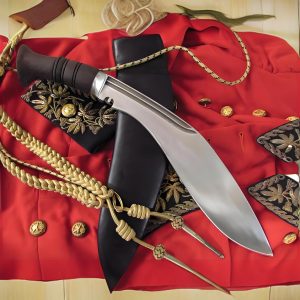
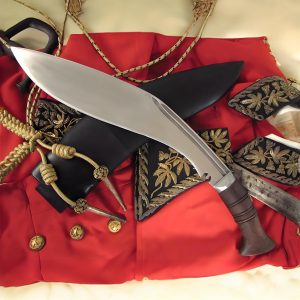

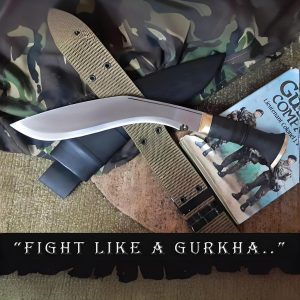


评价
目前还没有评价